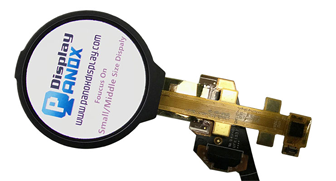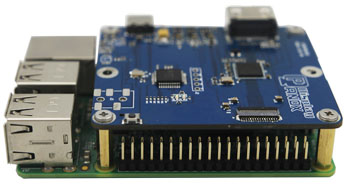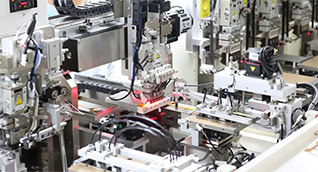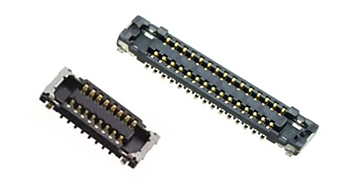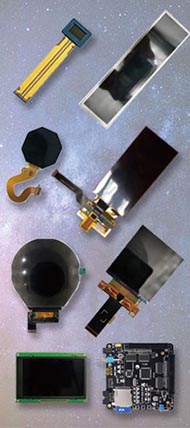VCSELs (Vertical Cavity Surface Emitting Lasers) are versatile semiconductor lasers widely used in applications such as 3D sensing, facial recognition, LiDAR systems, data communication, and industrial automation. Their compact size, high efficiency, and excellent beam quality make them ideal for consumer electronics, automotive safety, medical diagnostics, and next-generation optical networks.
What is a VCSEL and how does it function?
A VCSEL is a semiconductor laser that emits light vertically from the surface of the chip, using a short vertical cavity formed by distributed Bragg reflectors (DBRs). Electrical current excites the active region, producing coherent light with a circular, low-divergence beam. This design enables efficient, compact lasers with high modulation speeds and easy integration into arrays and systems.
How are VCSELs used in consumer electronics?
VCSELs are integral to many consumer devices:
-
3D Facial Recognition: VCSELs power structured light and time-of-flight (ToF) sensors in smartphones for secure face unlock and augmented reality (AR) features.
-
Gesture Control: Enabling touchless interaction in smart devices.
-
Optical Mice and Printers: Providing precise, low-power laser sources.
-
AR/VR Devices: Delivering compact, efficient lasers for immersive displays and tracking.
Their small footprint and low power consumption make VCSELs ideal for portable electronics.
What role do VCSELs play in automotive applications?
In the automotive industry, VCSELs are used for:
-
LiDAR Systems: Providing high-resolution, long-range sensing for autonomous driving and advanced driver assistance systems (ADAS).
-
In-Cabin Monitoring: Enabling occupant detection, gesture recognition, and driver alertness systems.
-
Safety Systems: Enhancing collision avoidance and pedestrian detection through precise depth sensing.
VCSELs’ ability to form high-density arrays allows scalable power and resolution for these critical applications.
How are VCSELs applied in data communication and networking?
VCSELs are widely deployed in short-range optical communication, including:
-
Data Centers: High-speed optical interconnects for servers and switches, supporting multi-gigabit data rates.
-
Local Area Networks (LANs): Efficient, low-cost transmitters for fiber optic links.
-
Cloud Computing Infrastructure: Compact, energy-efficient lasers that reduce power consumption and heat.
Their fast modulation capability and ease of integration support the growing demand for bandwidth and low-latency communication.
What industrial uses benefit from VCSEL technology?
VCSELs are increasingly used in industrial automation and manufacturing:
-
Robotics: Enabling precise sensing and navigation.
-
Quality Inspection: Providing accurate 3D imaging for defect detection.
-
Material Processing: Low-power laser sources for marking and engraving.
-
Environmental Sensing: Monitoring air quality and detecting hazardous gases.
Their robustness and scalability make VCSELs suitable for harsh industrial environments.
How do VCSELs contribute to medical and biometric applications?
Medical and biometric fields leverage VCSELs for:
-
Non-invasive Diagnostics: Laser-based glucose monitoring and optical coherence tomography.
-
Biometric Security: Fingerprint scanning and facial recognition.
-
Wearable Health Devices: Compact lasers for monitoring vital signs.
VCSELs’ precise beam control and low power consumption are critical for safe, reliable medical devices.
What are the advantages of VCSELs that enable these uses?
VCSELs offer several key benefits:
-
Compact Size: Facilitates integration into small devices and arrays.
-
High Efficiency: Low threshold currents reduce power consumption.
-
Excellent Beam Quality: Circular, low-divergence beams simplify optics.
-
Scalability: Easily fabricated in arrays for higher power or resolution.
-
Cost-Effective Manufacturing: Wafer-level testing improves yield and reduces costs.
These features drive VCSEL adoption across diverse industries.
How is the VCSEL market evolving and what future uses are emerging?
The VCSEL market is growing rapidly, driven by:
-
Expansion into LiDAR 2.0 for autonomous vehicles.
-
Integration with quantum communication and neuromorphic computing.
-
Development of wavelength-tunable VCSELs for advanced sensing.
-
Enhanced AI-driven beamforming and optical system integration.
-
Increasing use in 6G communications and photonic chip platforms.
Panox Display’s advanced OLED and LCD solutions support these innovations by providing precise control and monitoring interfaces for VCSEL-based systems.
How does Panox Display support VCSEL technologies?
Panox Display contributes to the VCSEL ecosystem by offering:
-
Custom Display Panels: High-resolution OLED and LCD modules for laser system control and diagnostics.
-
Compact and Flexible Solutions: Micro-OLEDs and flexible displays that integrate seamlessly with VCSEL modules.
-
OEM Services: Tailored display system solutions that enhance user interfaces in consumer electronics, automotive, and industrial applications.
Their expertise helps engineers and developers optimize VCSEL performance and usability.
Panox Display Expert Views
“VCSEL technology is transforming industries by enabling compact, efficient, and scalable laser solutions. At Panox Display, we recognize the critical role of advanced display interfaces in maximizing VCSEL system performance. Our custom OLED and LCD products provide intuitive control and real-time feedback, empowering innovation in 3D sensing, LiDAR, and optical communications. We are committed to supporting the evolving VCSEL market with reliable, high-quality display solutions.”
Conclusion
VCSELs have become essential components in modern technology, powering applications from facial recognition and autonomous vehicles to data centers and medical diagnostics. Their unique design offers unmatched efficiency, beam quality, and scalability. Supported by companies like Panox Display, which provide advanced display and control solutions, VCSELs are poised to drive innovation across consumer electronics, automotive safety, industrial automation, and beyond.
FAQs
What industries use VCSELs the most?
Consumer electronics, automotive, data communications, industrial automation, and medical devices are primary users of VCSEL technology.
Why are VCSELs preferred for 3D sensing?
Their compact size, high beam quality, and ability to form arrays enable precise depth mapping and facial recognition.
Can VCSELs be used in autonomous vehicles?
Yes, VCSELs are key components in LiDAR systems for navigation and safety.
How does Panox Display enhance VCSEL-based systems?
By providing customizable OLED and LCD panels for system control, monitoring, and user interaction.
Are VCSELs energy efficient?
Yes, VCSELs consume less power due to low threshold currents and efficient design.











